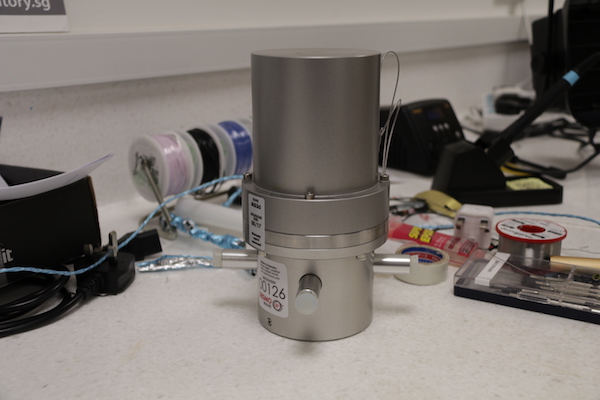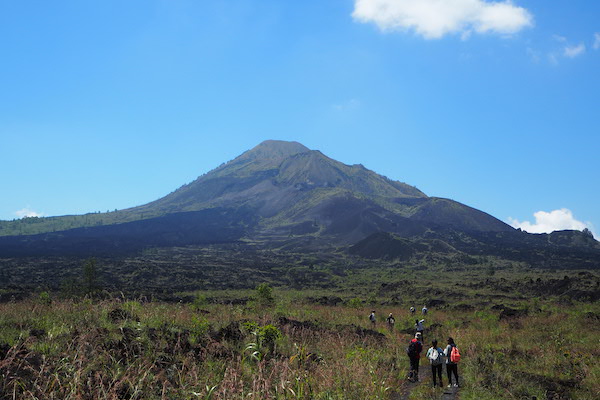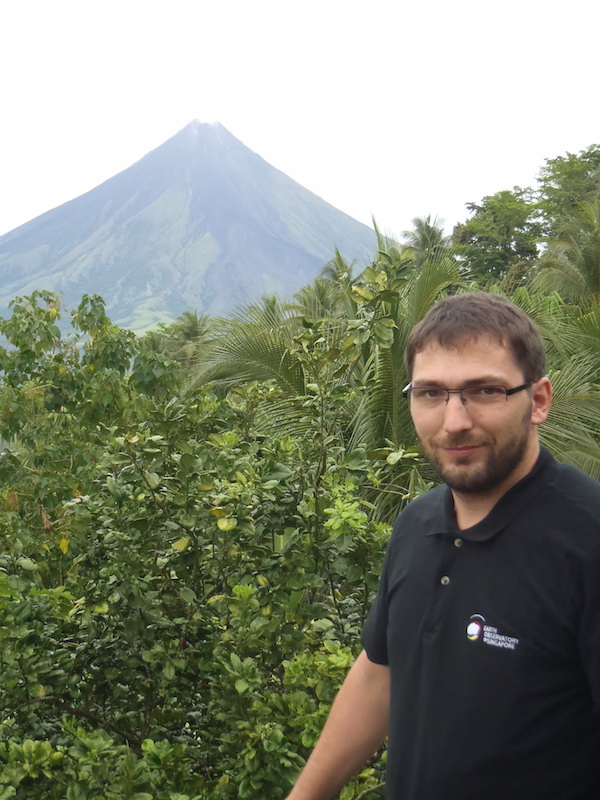
After watching a documentary about volcanoes when he was seven years old, Asst. Prof Benoit Taisne decided that in the future he would become a volcanologist in order to save lives.
“The documentary showed footage of a volcano erupting, which led to many deaths, and I felt that this shouldn’t be the case. Like all my friends who wanted to be firefighters growing up, I also wanted to be a ‘firefighter,’ but for volcanoes,” said the 36-year-old French national, who has been studying volcanoes for the last 20 years. He is now a Principal Investigator at the Earth Observatory of Singapore (EOS) and an Assistant Professor at the Asian School of the Environment in Nanyang Technological University.
Asst. Prof Taisne aims to develop tools that can be used in real-time to mitigate risks linked to volcanic eruptions. He explains, “We conduct small-scale experiments in the laboratory to gain knowledge about how volcanoes work. We then use instruments on the ground to measure the pulse of a volcano, and try to estimate the onset of an eruption, as well as how big it will be and how long it will last.”

Currently, Asst. Prof Taisne is exploring the use of long-range infrasonic monitoring to detect the intensity of remote volcanic eruptions in the Southeast Asian region, which can inject volcanic ash into the atmosphere. Infrasonic sounds have a frequency below the range of what humans can hear, and infrasonic instruments are capable of detecting major volcanic eruptions at long ranges.
While his colleagues have experimented with infrasound instruments for the same purpose, the novelty of Asst. Prof Taisne’s approach lies in fact that he places these instruments far from volcanoes.
“In the past, infrasonic instruments were only placed tens of kilometres (km) away from the volcano. But now, we are trying to push this technique to the limit to see if we can still estimate the height of volcanic plumes, even when the instrument is placed hundreds or thousands of kilometres away from the volcano,” said Asst. Prof Taisne.
There are currently five infrasound stations in Southeast Asia, including one in Singapore, located at MacRitchie Reservoir Park.
Another station is slated for installation in the region in the next year, said Asst. Prof Taisne. This will help scientists better predict the height of volcanic ash plumes that can pose major hazards to aviation safety.

He said, “Singapore is surrounded by many explosive volcanoes, with the closest located in Sumatra just 400 km away. We want to know the likelihood of ash affecting any part of the region, to ensure that no airplane will pass through a dense volcanic ash cloud. Even a thin layer of ash could cause Changi Airport to be shut down.”
The last time Singapore’s air quality was compromised by volcanic ash was in 1991, when Mount Pinatubo in the Philippines erupted — the second largest volcanic eruption of the 20th century.
To this day, Asst. Prof Taisne’s childhood adage of “saving the world” continues to be the driving force behind his daily work. He currently resides in Singapore with his wife, a hydrogeologist at the National University of Singapore, and his 5-year-old daughter.
He said “It might sound childish, but it has always been my mantra. My main reason for studying volcanoes is to minimise their impact, and the number of people that could be killed by eruptions.”

With that, Asst. Prof Taisne cites a tool he invented in 2009 — the Seismic Amplitude Ratio Analysis (SARA) method- as the biggest achievement of his career so far.
Still in use today, the SARA method tracks the motion of magma in real-time using continuous seismic data. As magma movement indicates a potential eruption, the tool allows the volcanic alert level to be updated more quickly, giving more time to manage the evacuation of people.
Because most of his time is spent in the laboratory, Asst. Prof Taisne jumps at any opportunity to go out in the field for research. Once, he spontaneously borrowed his mother’s car without permission to drive from France to see Mount Vesuvius in Naples, Italy, a journey which took two whole days.
Even after many years of visiting active volcanoes, the thrill of experiencing a volcanic eruption first-hand still has not dissipated for the volcanologist. When asked to share his favourite volcano encounters, Asst. Prof Taisne perks up.

He vividly recalls his most unforgettable experience on the job four years ago, when he and his colleagues were woken up by the “surprise” eruption of Mount Lokon on the island of Sulawesi, Indonesia.
“Just before the sun rose, there was a ‘boom!’ and a ‘bang!’ and we all were wondering, ‘Wait a minute, what’s going on?’ There was no warning that an explosion would occur but suddenly, there was a dark plume of ash rising above the crater in our backyard,” said Asst. Prof Taisne.
He added with a laugh, “Everyone rushed out in their pyjamas, extremely informal, but we all had wide smiles on our faces while we watched the volcano erupt. That was memorable.”